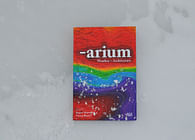
Our proposal incites the systemic confluence of the watershed, dredge-shed, and civic-shed into an overall soft-shed — a malleable, resilient, transcalar, and productive system that leverages opportunistic relationships to make each shed more robust. This occurs through a series of tactics — tributaries, islands, and lakes.
Tributaries
As Toledo grew beyond its urban core, its fabric encircled the industrial lands that colonized the riverfront. While these industrial lands are vital to the city’s economic health, they render the notion of a continuous public waterfront implausible. Instead of negating industry, our scheme attempts to reconcile the confluence of industry and public access to the water. A proposed series of connectors, or tributaries that provide an access easement through the terrain vague onto the water / ice directly also serve as storm water retention basins, to reduce the pressure on CSOs. In Riverside Park, Pen 7, and Pen 8, the tributaries hold and remediate the dredge material, while also forming a platform of public program.
Islands
Presently, Toledo extracts close to 750,000 cubic yards of dredge material annually, which is shipped off to the Maumee Bay where it has been associated with inciting algae blooms. One of the difficulties of using this dredge matter as a public resource is the distance between dumping sites in the Bay and the City. Our proposal utilizes three tributaries noted above in conjunction with a series of Geotube Pontoons that serve to dewater and remediate the dredge. While being dewatered, these pontoons can host a series of light public platforms that allow for a nodal waterfront system of islands. Connected to the tributaries, these pontoons are grouped into larger figures that provide different programmatic opportunities depending on the time of year, festival and event schedules, as well as unanticipated needs of the citizens. After the dewatering period, the public platforms are removed and reinserted into newly dredged pontoons, while the dewatered pontoons are hydroseeded for remediation. Each of the remediated pontoons are harvested for flowers in early November, and their soil is mixed with a rare-earth bentonite and water solution. These geotubes pontoons are then tugged into the bay where they either restore the shoreline, or spray this slurry solution into Lake Erie, which acts to suppress and absorb algae growth. Over the course of several years, the pontoons act as a distributed system to administer this solution around the Lake and restore it to its original state. Riverside Park is conceived as a remediation dredge research site as well as dock for a Dredge Research Vessel — a mobile island that allows the general public to take tours through the Maumee River and directly witness the process of dredging, remediation, and disposal.
Lakes
Currently there are over 1124 foreclosed sites in Toledo, several of which are vacant. We propose that these waiting lands are operationalized by creating a perimeter curb of dredge-filled bags around the house and property line to allow stormwater to fill these sites and reduce pressure on the sewer system. In total this distributed ‘lake’ consists of 84 acres of land, equivalent to Riverside, Edison and International Park. The public platforms could be inserted into these lots, resting on the curb foundations, to enable local neighborhood public program when not in use on the river. Riverside Park, Pen 7, and Pen 8 are further organized as a three-step phytoremediation wetland for stormwater and dredge remediation.
Status: Competition Entry
Location: Toledo, OH, US
Firm Role: Primary Office
Additional Credits: Project Team:
Neeraj Bhatia
Anesta Iwan
Jeremy Jacinth
Cesar Lopez
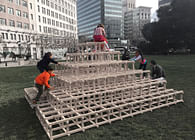
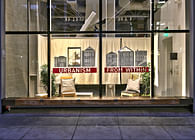

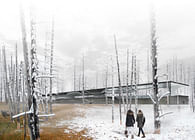
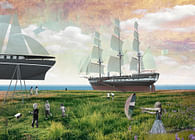
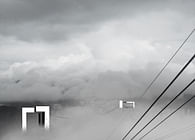

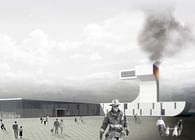



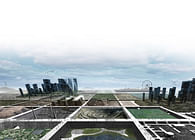
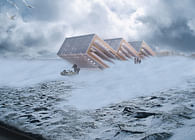
![Bracket [Goes Soft] Bracket [Goes Soft]](https://archinect.gumlet.io/uploads/fh/fhcvzt2j1lysvlgm.jpg?fit=crop&auto=compress%2Cformat&enlarge=true&crop=entropy&w=195&h=140)
